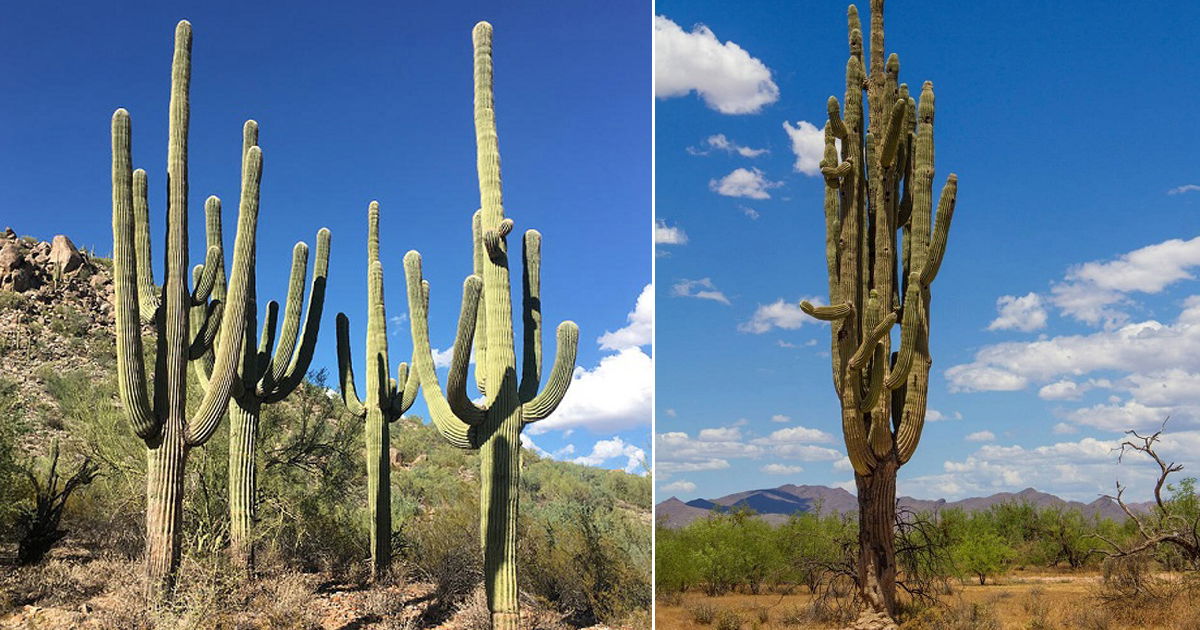The Saguaro cactus (Carnegiea gigantea) is an iconic symbol of the American Southwest, revered by many for its towering stature and striking beauty. However, beyond its aesthetic appeal lies a more profound fascination: the enigmatic age of these resilient giants. Observing a Saguaro in its natural habitat often leads to a common question: “How old is that cactus?” This inquiry hints at a deeper intrigue surrounding their longevity and the ecological implications tied to their age. The complexity behind determining the age of a Saguaro cactus reveals much about its growth patterns, environmental conditions, and the intricate web of life that depends on this magnificent plant.
The Growth Patterns: Unraveling the Timeline of a Saguaro
To comprehend the age of a Saguaro cactus, one must first appreciate its unique growth patterns. Contrary to many trees, which can be dated by their rings, Saguaros do not exhibit discernible growth rings that are easily counted. Instead, their growth is dictated by several factors, including temperature, rainfall, soil quality, and competition with neighboring flora.
In their early years, Saguaros grow exceedingly slowly. Initially, they may measure less than an inch tall after one year, and they often remain under a foot for the first decade. During this time, a Saguaro is stimulated primarily by the availability of moisture and nutrients within the soil. This slow growth spurt continues until they reach about 50 years of age, at which point they might finally begin to sprout arms, an event that marks their transition from mere survival to the quintessential Saguaro appearance that many people recognize.
As they reach maturity, these cacti can grow at a more accelerated rate, sometimes adding several inches in height each year. However, environmental stressors such as drought can significantly hinder their growth, making them less predictable. Thus, the observable size or presence of branches can help provide a rough estimate of age—typically, a Saguaro measures around 10 to 12 feet tall at around 50 years old, while larger specimens may be over 100 years old, towering at heights of 30 feet or more.
The Role of Environmental Factors: How Habitat Shapes Longevity
Every Saguaro cactus is a testament to the conditions of its environment. The average lifespan of a Saguaro ranges from 50 to potentially over 200 years, contingent on several ecological factors. Water availability is a crucial determinant; in habitats with significant rainfall, Saguaros can thrive and grow rapidly. Conversely, during prolonged droughts, their growth can stall dramatically, leading to a longer but less dynamic lifespan.
Soil quality plays an equally vital role in a Saguaro’s development. Nutrient-rich soils support healthier plants that can grow more robustly, while poor soils result in stunted growth. Similarly, competition from nearby vegetation can impose additional stress, as other plants vie for limited resources like water and light. Saguaros that are isolated or situated in areas with fewer competitors tend to age more successfully, reaching impressive sizes as they have access to more resources.
Furthermore, exposure to natural elements can shape the aging process as well. A Saguaro that endures frequent high winds or extreme temperatures may develop adaptations that could either hasten its demise or allow it to withstand environmental stresses. Observing these factors not only helps in estimating the age of a Saguaro but also provides insights into the ecological balance of desert environments.
Cultural Significance: Understanding the Reverence for Age
The age of the Saguaro cactus extends beyond its biological significance; it also holds immense cultural value. Indigenous communities in the region, such as the Tohono O’odham Nation, regard the Saguaro as a symbol of life and resilience. Traditionally, these communities have harvested the fruit of the Saguaro in late June, celebrating its maturity and the cycle of life it represents.
Moreover, the Saguaro’s majestic presence has compelled artists, naturalists, and photographers to capture its beauty across generations. The desire to know the age of a particular Saguaro speaks to a broader curiosity about the natural world and our connections to it. Each cactus becomes a living record of the history it has witnessed, bearing witness to climactic shifts, wildlife interactions, and human encroachment.
In essence, the age of a Saguaro cactus encapsulates a narrative so potent that it resonates with many who seek a deeper understanding of their existence. The age of these cacti functions as a bridge between ecological, cultural, and historical realms, illustrating the interdependence of all living things in this ecosystem.
Conclusion: The Enigmatic Lifespan of Saguaros
Understanding the age of a Saguaro cactus requires more than mere observation—it necessitates an appreciation of its growth cycles, environmental influences, and cultural significance. While it can be challenging to ascertain the exact age of these iconic plants due to the complexities of their growth patterns, the insights gleaned from their existence are invaluable. Each Saguaro stands as a silent sentinel, embodying both the challenges of survival in a harsh landscape and the rich tales of those who share their environment. Ultimately, Saguaros beckon us to ponder the intricate balance of life and the stories etched within their spines, waiting patiently to be discovered by those willing to look closer.





Leave a Comment